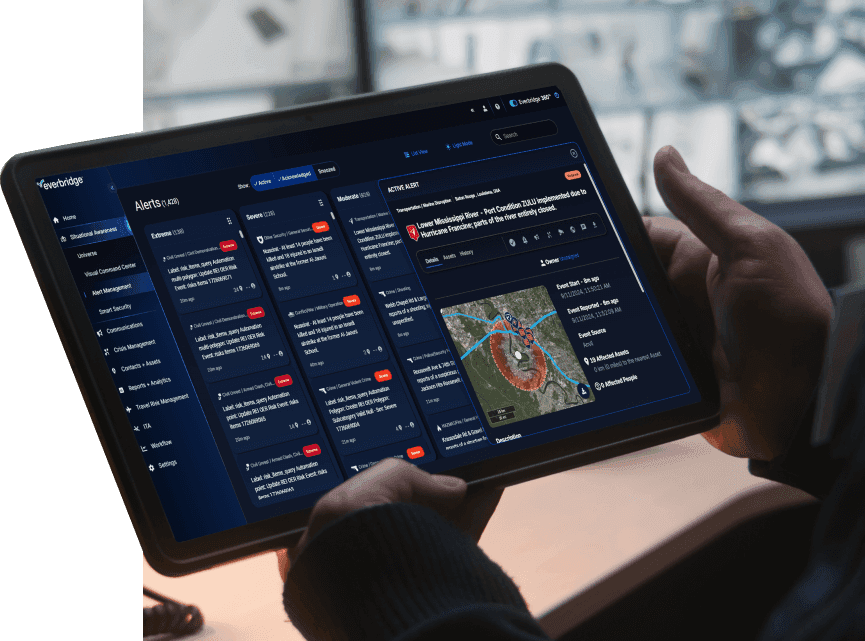Organizations today face an unprecedented array of threats. From cyber-attacks and outages, natural disasters, supply chain disruptions, pandemics, geopolitical events, and sudden regulatory changes, today’s risk environment demands sophisticated preparedness strategies.
The growing prevalence of these threats in recent years has elevated business continuity and resilience to a top priority for organizations. These terms are frequently used interchangeably, which creates confusion and can lead to dangerous gaps in risk management.
Fortunately, this misconception is declining as revealed by the BCI Continuity & Resilience Report 2025, where only 40.2% now claim there is no difference between BC and resilience in their organizations.
Understanding the distinction is essential for building a comprehensive strategy that ensures your organization can both survive immediate threats and thrive through long-term uncertainty.
Whether you are developing your first continuity plan or evolving a mature program, understanding these differences will strengthen your organization’s ability to withstand disruption and emerge stronger.
What is business continuity?
Business continuity is an organization’s capability to maintain critical operations at acceptable levels during and after disruptions. When incidents happen, established procedures and processes are used by organizations to guide response and recovery.
The foundation of business continuity rests on three core components:
- Backup systems that ensure alternative resources are available when primary systems fail. These might include redundant data centers, alternative communication channels, or standby equipment that can be activated quickly.
- Recovery procedures that provide step-by-step instructions for restoring operations after disruption. These documented processes detail exactly what actions to take, who should take them, and in what sequence to minimize downtime.
- Emergency response protocols guide immediate actions during crisis situations. These protocols prioritize safety, establish command structures, and coordinate initial response activities across the organization.
Business continuity planning emphasizes maintaining minimum acceptable service levels. Rather than optimizing performance during disruption, the goal is to ensure critical functions continue at predetermined thresholds until normal operations can resume.
What is business resilience?
Business resilience represents your organization’s ability to overcome, adapt, and evolve in response to unexpected disruptions. Unlike the reactive nature of business continuity, resilience takes a forward-looking, strategic approach that builds organizational flexibility before incidents occur.
This capability extends beyond recovery to encompass adaptation. Resilient organizations do not simply return to previous operating states; they see disruptions as opportunities to improve processes, strengthen systems, and enhance performance. This distinguishes resilience from traditional continuity planning.
Business resilience integrates into daily operations rather than activating only during crises. The capabilities that enable resilience (flexible systems, adaptive culture, diversified resources) function continuously, allowing organizations to respond dynamically to emerging challenges without requiring formal plan activation.
Business resilience demands investing in agility. This means building workforce skills for quick deployment, diversifying supplier options, and adopting flexible technology. These steps provide essential capacity during disruptions.
Business continuity vs. Business resilience: Key differences
Business continuity focuses on maintaining operations during and after disruptions, while business resilience encompasses the broader capability to adapt, evolve, and strengthen organizational capacity over time.
The fundamental distinction between business continuity and resilience lies in their underlying philosophies:
| Business Continuity | Business Resilience |
| Response to incidents | Preparation for uncertainty |
| Focus on recovery and restoration | Focus on adaptation and evolution |
| Event-driven activation | Continuous operational integration |
| Maintaining minimum service levels | Optimizing performance through disruption |
Metrics and measurement
Both approaches utilize shared metrics while maintaining unique measurement priorities:
- Recovery Time Objective (RTO) defines the maximum acceptable downtime for critical systems. This metric is essential for business continuity planning, establishing clear recovery targets. For business resilience, RTO represents one input among many when assessing organizational adaptive capacity.
- Recovery Point Objective (RPO) specifies the maximum acceptable data loss during disruption. Business continuity uses RPO to determine backup frequency requirements. Resilience planning considers RPO when evaluating whether acceptable data loss thresholds align with organizational risk tolerance.
- Mean Time to Recovery (MTTR) measures the average time required to restore operations after incidents. This business continuity metric tracks recovery efficiency over multiple events. Resilience programs analyze MTTR trends to identify whether organizational adaptive capacity is improving.
- Incident Response Time captures how quickly organizations activate response procedures when a disruption occurs. For business continuity, faster response times indicate better preparedness. Resilience programs evaluate whether response speed improves as organizational capabilities mature.
- System Downtime quantifies the total time critical systems remain unavailable. Business continuity aims to minimize downtime through effective recovery procedures. Business resilience seeks to reduce downtime impact through flexible work processes that maintain productivity despite system unavailability.
- Cost of Recovery calculates expenses incurred when restoring operations after a disruption. Business continuity uses this metric to justify investment in backup systems and recovery capabilities. Resilience planning evaluates whether adaptive approaches reduce recovery costs compared to traditional continuity methods.
Assess how resilient your organization is and how prepared you are for business disruptions. Try our free assessment to see how your organization compares to leaders in your industry.
Achieving both business continuity and resilience
Modern organizations require both reactive recovery capabilities and proactive adaptive capacity. The most effective strategies integrate these concepts through a comprehensive platform that unifies continuity and resilience efforts.
The Everbridge High Velocity Critical Event Management (CEM) platform unites these approaches, providing technological infrastructure that supports immediate incident response while building long-term organizational resilience.
By integrating real-time threat intelligence, automated response, and comprehensive communication, organizations can move beyond reactive planning and toward proactive, holistic preparedness.
Ready to elevate your business continuity and resilience capabilities? Take a personalized tour of Everbridge BCIC to discover how to transform your organization’s approach to risk management and preparedness.





